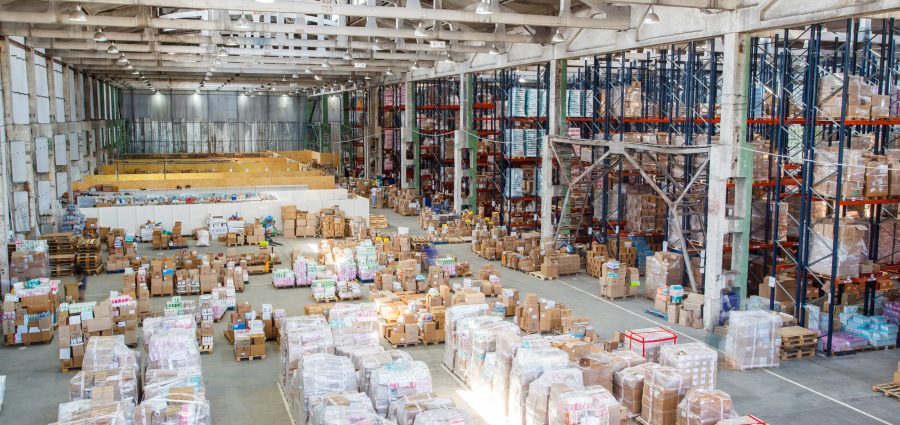Turn on the news or open social media, and you’re bound to see something related to supply chain challenges or pandemic-induced chaos.
Manufacturers and distributors alike are facing no shortage of problems from difficulty securing materials to logistics slowdowns. Other challenges include a labor shortage, a growing lack of skilled employees and inflation.
“Whenever the industry experiences big events, it doesn’t necessarily have a huge effect on changing a bunch of things. Rather, it speeds up a lot of problems that were already happening. As far as the current supply chain is concerned, the pandemic obviously had a really big effect, and we’re still trying to dig our way out of it, but I think it highlighted the inherent systemic weaknesses in the supply chain and made them more severe,” says Travis Richards, CEO of Catco, a manufacturer of catalytic heaters, and Class of 2017 graduate of the Master of Industrial Distribution (MID) program at Texas A&M University.
Regardless of the causes, the supply chain at all levels is experiencing turmoil. As a result, professionals with expertise in operations and supply chain management are receiving more attention and recognition within their organizations. They are helping their companies mitigate the effects of disruptions, elevating this role across in the industry. This perfect storm has paved the way for professionals with supply chain expertise to be seen in a new light.
Allie Copeland, vice president of global operations for distributor ADI, views this shift as an alignment of a wheel with sales, marketing and operations as the spokes. Copeland is also a graduate of Texas A&M’s MID program.
“If one spoke pulls too hard, the wheel is off-balance. What you really want is healthy tension between the functions. I think supply-chain and distribution professionals have always had a seat at the table, but I think the wheel is more aligned in terms of operations being able to voice concerns, risks and ideas — and being heard,” says Copeland.

Moving Forward
To keep the supply chain moving and get it back to functioning levels, manufacturers and distributors need to reevaluate policies and procedures to make sure they’re able to respond quickly to situations. As their importance grows in helping to mitigate the current situation, the supply chain/operations professional is focused on:
- Emphasizing clear and open communication within their four walls.
Both Copeland and Richards stress the importance of communication. “When the pandemic started, the leaders in our company were meeting seven days a week, sometimes twice a day, and that enabled us to make decisions really quickly. In today’s environment, you can’t take weeks or months to make a decision because it’s just too late,” says Copeland.
Companies need agility and a clear flow of information running both downstream and upstream to respond to situations fast and efficiently.
- Creating mitigation plans.
Copeland also encourages companies to think ahead and strategize mitigation plans. “The pandemic forced many of us to start putting mitigation plans in place for things we never thought of before. It taught us that the better prepared you are, the better you’ll be able to respond as new situations arise,” says Copeland.
Brainstorm all possible risks and scenarios that would be detrimental to your business, suggests Copeland. Then go one step further to determine what your company’s response would be as well as who would be the people in charge of making those decisions.
“What are risks to your business and the sustainability of your business operations? If they were to happen, who do you need in a room that could sit at a table on day one and make decisions to keep things going?”
- Structuring connections with suppliers and vendors.
Initiating regular conversations with vendors will be key. “You need to have regular cadence and rhythm when you’re talking to people,” says Richards. “And it doesn’t have to be complicated or formal.”
Internally, companies should establish a process or structure for these relationships, detailing how often to check in, the method of communication, and getting specific about what a good relationship looks like. Companies might opt for full vendor stratification, grading vendors and suppliers on certain criteria, which determines the type of relationship and communication needed. Communication could be an email check-in once a week and a scheduled 15-minute phone call once a month. This easy flow of information leads to better insights and stronger relationships.
“If you have critical items and suppliers, that if you can’t get their stuff, it’s going to be detrimental for your business, those are the people you should start with,” says Richards.
- Showing empathy.
Manufacturers and distributors are weathering the same storm right now, and a general rule of thumb should be expressing gratitude and empathy. Although operations look different for each part of the supply chain, each link is still experiencing stress in one form or another.
“Everyone dealing with the flow of material has the same problems right now, so we’re all in it together. Be understanding, and whenever someone steps up and helps you out, express gratitude and thanks,” says Richards.

Kourtney Gruner is the Assistant Director of Student Services and Capstone Coordinator for the Master of Industrial Distribution program at Texas A&M University. Texas A&M’s Master of Industrial Distribution (MID) is a 4-semester, part-time, mobile learning graduate program designed for working professionals. By incorporating both academic professors and industry leaders who co-teach each course, students not only learn theories, but applicable supply chain management, logistics, and profitability of distributors and manufacturers in industrial channels. Contact Mark Lorenzo at mark.lorenzo@tamu.edu for more information about the MID program.
Related Posts
-
A smart mix of profitable products and agile procurement strengthens a distributor’s competitive position, Avnet’s…
-
The distributor of roofing, siding and exterior building products opened a new location at 101…
-
Companies must adapt by leveraging vision, understanding, clarity and agility to navigate the emerging business…





